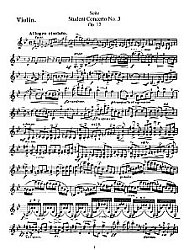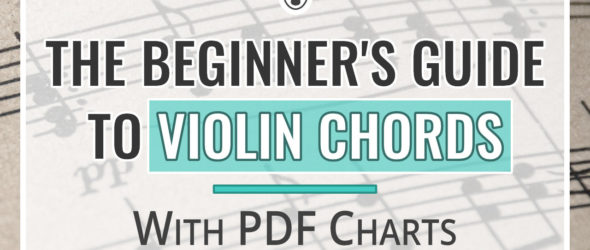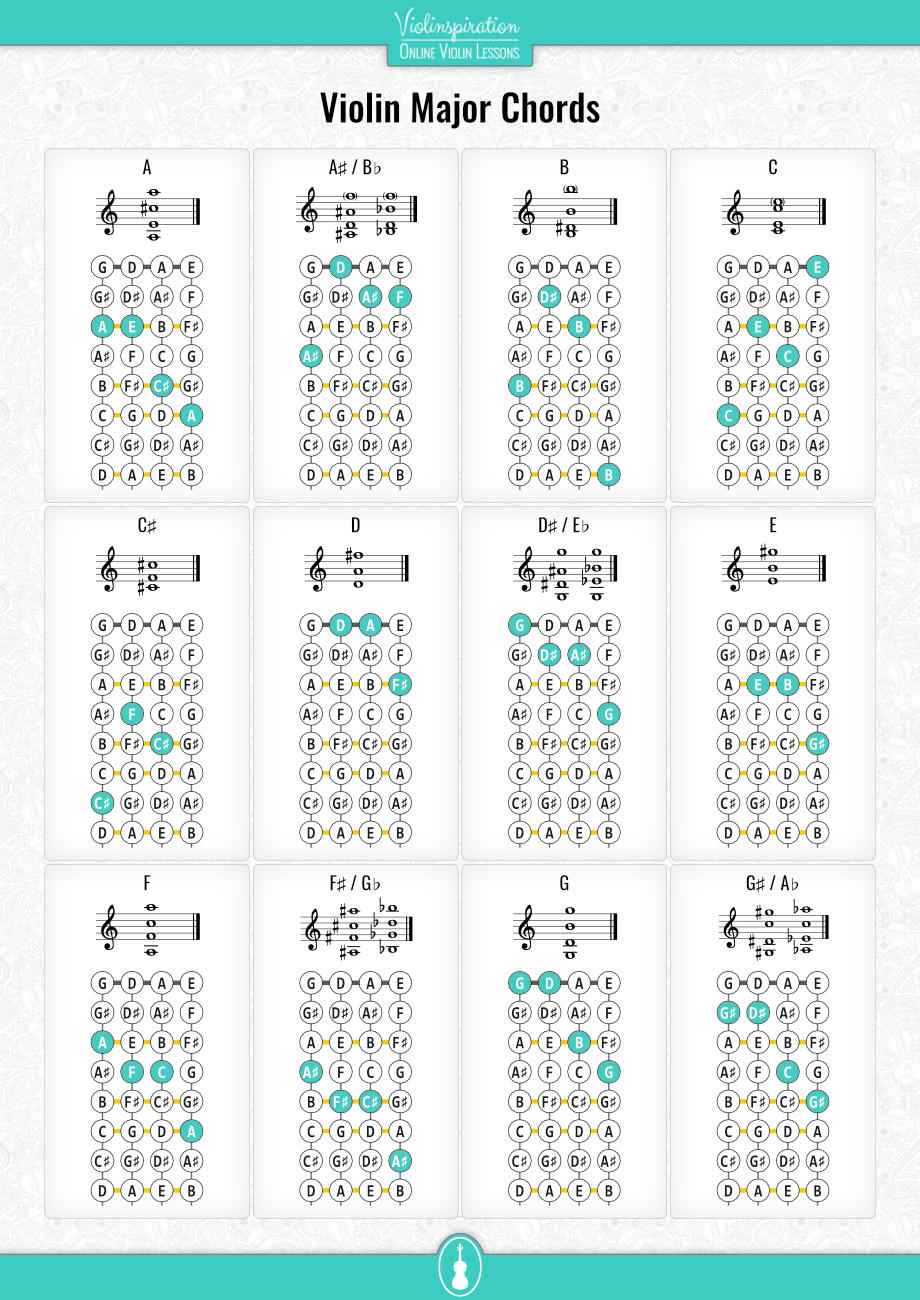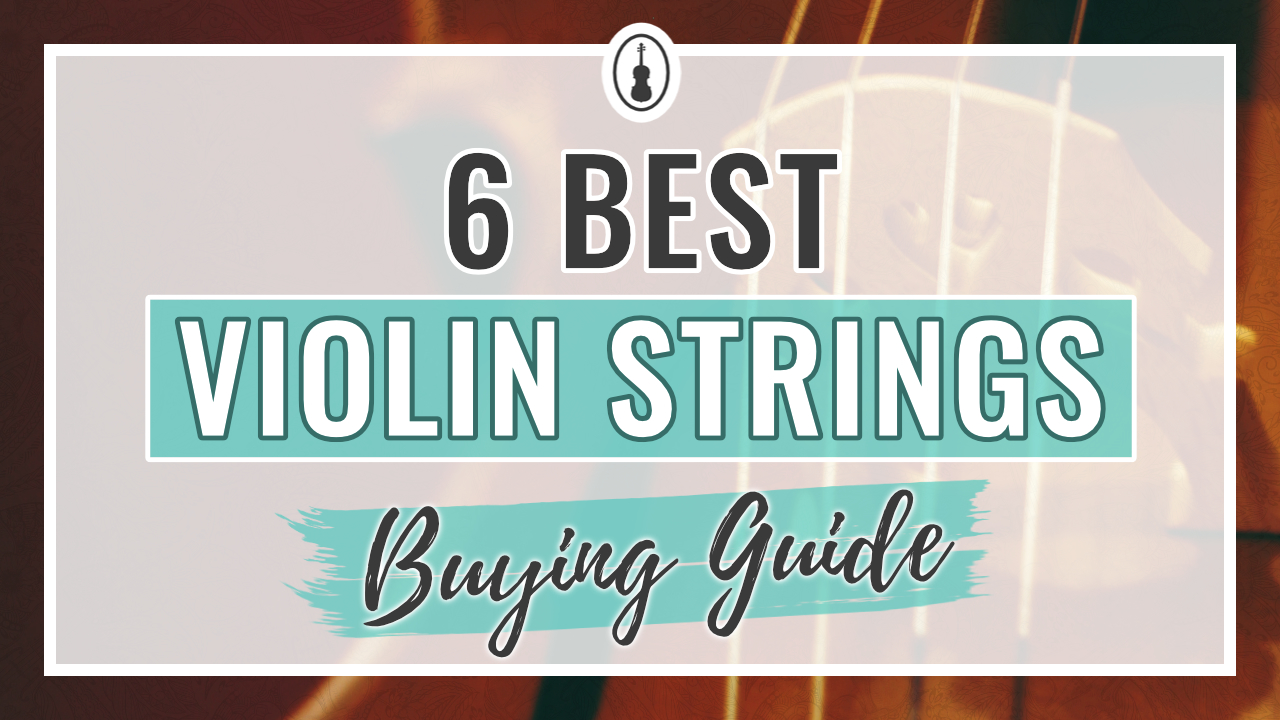Lately, I have been receiving some questions about violin chords. So today, I’m helping you out with this violin chords beginners guide!
This article is an introduction to and overview of violin chords, one of the key violin techniques to learn if you want to play classical music on your violin.
In it, I describe important aspects of violin chords. Such as what chords are, practice techniques I recommend to learn them, and the most common chords to play on the violin.
By the time you finish reading my guide, you’ll have a strong understanding of what chords are and the correct techniques for playing chords on your violin!

Can You Play Chords on the Violin?
Most people know that you can play chords on chord instruments such as piano, keyboard, organ, harp, guitar, and ukulele. But, can you play chords on the violin?
The answer is yes: it is possible to play chords of up to four notes on a violin. You usually play 4-note chords as broken chords – playing the lower two notes first and the higher two notes after. To play three-note chords, you can either play a broken chord or directly press the bow into the middle string until it touches all three strings. Double stops are two-note chords you play on the violin.
A great example of a violin piece featuring lots of chords is the famous Chaconne by J.S. Bach. Check out the video below to hear this beautiful piece!
Violinists also often use chords in violin concerts. This cadenza of Paganini’s Violin Concerto No.1 is a great example of that:
Sidenote: If you love the Chaconne, you will probably also really enjoy this free YouTube playlist. It features all Bach’s Partitas and Sonatas played by Julia Fischer. The Chaconne is the most famous piece of them all, but there are so many other less famous but beautiful Sonatas and Partitas that you would probably love to discover! Julia Fischer’s interpretation is one of the most serene and beautiful versions of the Bach pieces you will find.
What Is a Violin Chord?
A chord is three or more notes that you play together.
On the violin, this means that you will hear three or four strings sounding simultaneous.
In reality, it is not possible to play more than three notes at once on the violin. That is why we usually separate violin chords into two parts. A violinist usually first hits the two lowest strings, then continues to slur the two highest strings.
Here you can see a slow-motion example of myself playing a chord:


How Do You Play Basic Violin Chords?
Playing basic chords on the violin is easy in theory but requires practice to sound nice. Start by placing the bow close to the frog on the two lower strings. Use enough pressure so you play on both strings at the same time. Then slur the lowest two notes with the highest two notes of the chord. To avoid making scratchy sounds in the middle of the slur, make sure to remove the pressure when you make the string crossing. You can add the pressure again when you arrive at the two upper notes.
Often, violinists use more bow length for the upper two notes of the chord than for the lower notes.
Another way to play a chord is to play it as a broken chord. In that case, you play all notes individually, connecting them with a slur. Since each note is separate, this type of chord is technically an arpeggio.
Playing Two Note “Chords”
Double stops are the easiest “violin chord.” Technically, double stops are not a chord as they only have 2 notes (a chord should have at least 3 notes).
When playing double stops, it is important to make sure you equally distribute your bow pressure among the two strings. Otherwise, one note will overpower the other when sounding.
If you haven’t practiced chords yet, I recommend you first practice double stops. You can use the exercises I describe in my article “How to Play Double Stops on Violin – Beginners Guide.” After that, return to this article to study violin chords.

Playing Three Note Violin Chords
When you play three-note violin chords, you slur the lower two notes with the higher note of the chords.
It means you will play the middle string in both the first and the last part of the chord.
In this picture, you can see an example of the most common way to play a three-note chord on the violin.

Playing Four Note Violin Chords
When you play four-note violin chords, you slur the lower two notes with the higher two notes of the chords. Since there are four notes in total, you play half of the notes before the slur and the other half after the slur.
This picture is an example of the most common way to play a four-note chord on the violin.

How Many Chords Does a Violin Have?
Theoretically, there are over 700 possible combinations of 3 to 4-note chords. Luckily, you will find you use only a few of them more often when playing classical music. On the violin, there are 11 different chord types in all 12 keys. The most common chords are major and minor chords. There are 12 major and 12 minor chords that are used in (classical) music. That means there are 24 major and minor chords in total. Of these 24 chords, my list of the most commonly used is below.
What Are the Most Common Violin Chords?
- A major (A): A – C♯ – E
- A minor (Am): A – C – E
- B♭ major (B♭): B♭ – D – F
- B♭ minor (B♭m): B♭ – D♭ – F
- C major (C): C – E – G
- C minor (Cm): C – E♭ – G
- D major (D): D – F♯- A
- D minor (Dm): D – F – A
- E major (E): E – G♯ – B
- E minor (Em): E – G – B
- F major (F): F – A – C
- F minor (Fm): F – A♭ – C
- G major (G): G – B – D
- G minor (Gm): G – B♭ – D
Violin Chords Guide [PDF]
Here is an easy reference guide I created of all the most common violin chords. With all the major and minor chords in all keys, this is the only PDF on the internet that shows all the chords on the violin in sheet music. This guide is suitable for violinists of all levels and composers to use as a reference for the possibilities on the violin.
You can download it for free below:

Violin Chords Guide
How to Make Use of the Violin Chords Guide
Once you download the violin chord guide, you will notice that some of the notes are between parentheses, like this:

A note between parentheses means that that note is optional. It is not natural for a violin player to play and is uncommon in pieces. However, if the player wants to play all strings for a fuller chord, they can feel free to use it.

3 Steps to Learn Violin Chords
Now you know all about chords, so it’s time to start practicing!
I recommend following these three steps to get started:
1. Download & Print My Free Overview of All Violin Chords [PDF]
Start your practice by downloading and printing (or opening) my free chord guide.

Violin Chords Guide
2. Learn the Most Common Chords on the Violin
Do you have my violin chord guide ready? Great, you can start practicing your first chords!
I suggest you begin with the D major and D minor chords (play the chord with the technique described above). The D major and minor chords are the easiest chords to learn on the violin.
After that, add the G major and minor chords. These are both easy chords to play as well. You will find them in a lot of classical violin repertoire.
As a challenge, try to add the C major and minor chords next. These chords are a little bit more difficult to master – try to train your fingers every day to become more flexible and get into the chord shape!
3. Learn a Violin Piece That Features Chords
Your last step would be to integrate the chords in a piece you could practice!
A fun lower intermediate song with chords that I can recommend to start practicing is the student violin concerto of Seitz (Suzuki book 4). It introduces both chords and double stops to the student.

Violin Concerto No. 3 Op. 12
Friedrich Seitz
For intermediate students, I can also recommend studying Polish Dance, a piece that features many chords, especially at the beginning of the piece.

Polish Dance
by Edmund Severn
If you are an advanced violinist, the most important chord repertoire to study are the Bach Partitas and Sonatas. One of my personal favorites is the Sonata no. 1 in G minor.
I also really enjoy practicing chords in the Largo from the 3rd Sonata of Bach:

Sonates for Violin
by J. S. Bach
Final Note
There you have it! A full step-by-step plan to learn chords on the violin.














